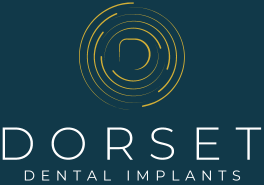The History of Implantology
With a special interest and focus on restorative dentistry, Dorset Dental Implant clinic is a reliable and trustworthy practice that has been restoring patient’s smiles for more than 55 years.
Throughout the decades, we have seen how the dental implant has evolved due to the latest state-of-the-art methods and technologies.
“More than five stars I’ve had cosmetic work done probably by the best dentist in Dorset. Also, the dental nurses to reception staff and technicians are so friendly And very kind. I would 100 per cent recommend.” – M.B.
One of the most popular tooth replacement solutions, dental implants are considered to be one of the best, long-lasting treatments in modern, restorative dentistry. Read more about their history here.
What is a dental implant?
A dental implant is one of the best long-term solutions for replacing missing teeth. Placed directly into your jawbone, they offer the wearer strong and durable results as they provide an artificial replacement for missing teeth. More: The top 10 benefits of dental implants.
Created to replicate natural teeth, dental implants are a more comfortable alternative to traditional dentures. They are able to support crowns, bridges and dentures in the same way that your natural root supports your teeth. What’s the procedure like?
BOOK YOUR FREE DENTAL IMPLANT CONSULTATION
What is a dental implant made of?
Made of titanium, dental implants are fused into the jawbone, which allows the bone to grow around the implants.
Designed to look and feel like existing teeth, the dental implant acts as an artificial root. The process of osseointegration permits the implant to operate and function like a natural tooth.
Read more:
- How dental implants can change your life
- Cost of dental implants
- Who is the ideal patient for dental implants?
But whilst the technology used for modern dental implants make them a popular choice for filling in open gaps, they are not new advancements in restorative dentistry.
The history of the dental implant:
The creation of the dental implant was to provide a stable, permanent solution to replace one or more missing teeth. How important is it to treat missing teeth?
“Ancient Mayans were the first to use dental implants.”
Thousands of years ago, early civilisations were able to recognise the long term benefits of repairing missing teeth. One of the earliest on record to attempt this reconstruction was around 600 AD in the Mayan civilisation.
Skulls recovered by archaeologists during this period have found teeth being replaced with carved stone, jade and even seashell fragments.
Even with the use of these primitive materials and methods available to these groups had shown the successes of their implants fusing to the bone, which we imagine without any anaesthetic would have been very painful.
The modern-day equivalent
 Fast-forwarding to the 1950s saw the birth of dental implants as we know them today – a much more advanced and comfortable procedure for restoring the mouth back to a good, healthy condition.
Fast-forwarding to the 1950s saw the birth of dental implants as we know them today – a much more advanced and comfortable procedure for restoring the mouth back to a good, healthy condition.
By accident, an orthopaedic surgeon Professor Brånnemark discovered the new modern implant. During his research, the professor found that after placing titanium into the bone he could not remove it without breaking the bone. This was the moment he realised that titanium had a unique ability; fusing to living bone.
This popular process was called osseointegration.
Professor Brånnemark realising the potential for missing teeth sufferers saw that a prosthetic crown was able to be fixed onto a screw post, and here the present-day dental implant was born.
Implants were designed and invented for patients who had lost their teeth but could not function with false teeth or dentures. Even today, denture wearers face many problems and irritations concerning their dentures. Not only do false teeth look, well, false, but they can also be very uncomfortable. Why not consider All-on-4 Dentures?
On top of this, without teeth in the mouth, the bone will resorb leading to further oral health complications.
In 1965, the first dental implant was fitted into the first-ever human patient, Gosta Larsson. In 2005, the patient had passed away with the original implants still securely placed after more than 40 years.
How have implants changed since then?
In the 21st century, there are hundreds of different types and variations of implants. In the early days, it was very much the case of one size fits all.
40 years ago implants were made almost identical, being the same width but differing in length.
Thankfully now, implants come in an array of shapes, sizes, contours and textures. However, they are still made from the very strong titanium and over the years, have been better improved to fuse more successfully than ever before.
For example, implants are now sandblasted or etched with acid to allow them to fuse faster and better to the bone. Whereas before, they were smoothed with machinery. It is with this change in technique that has made all the difference in their longevity.
In the 1980s an implant could often last around 15 years, implants being placed today have the ability to last a lifetime.
